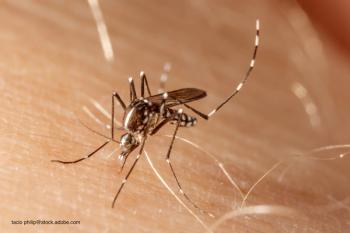
Three scientists discuss the global race for a COVID-19 vaccine.

A study looks at whether a vaccine for respiratory syncytial virus (RSV) could be effective in reducing RSV-associated, medically significant lower respiratory tract infections in infants.

Three scientists discuss the global race for a COVID-19 vaccine.

A program with the goal of expanding human papillomavirus (HPV) vaccination and preventing HPV-related cancers has been expanded.

A recent study offers hope for more effective vaccine responses.

Face mask mandates mean that many people are wondering what material works best at protecting someone from COVID-19. A new study offers some answers.

It’s not only professional sports leagues returning to the playing field. The American Academy of Pediatrics (AAP) has issued interim guidance to keep young athletes safe from COVID-19.

Immunizations during pregnancy are common and meant to provide protection during the early months of life. A literature review looks at whether the practice influences other early health outcomes.

Contemporary Pediatrics sat down with Andrew Schuman, MD, to talk about how technology can help slow the spread of COVID-19.

The US government has entered into an agreement to acquire the first 100 doses of a COVID-19 vaccine candidate developed by Pfizer and BioNTech, pending approval by the US Food and Drug Administration.

Routine vaccination for meningococcal disease has been recommended since 2005. A study looks at whether the recommendation has reduced the incidence of disease.

The American Academy of Pediatrics (AAP) has released interim guidance for multisystem inflammatory syndrome in children (MIS-C).

Warmer weather means more time outside and the risk of a mosquito or tick bite. A poll examines how parents try to keep their children safe.

Every pediatric provider including pediatric nurse practitioners and pediatric nurses working in hospital or in outpatient settings must know the various ways children and adolescents may present with possible COVID-19 symptoms. They must also know which patients are at high risk of developing multisystem inflammatory syndrome in children (MIS-C).

The job market for physicians has softened, but it isn’t expected to be permanent.

Parents of newborns who had been exposed to Zika virus in utero may have breathed a sigh of relief when their child was born with normocephaly. An investigation finds that adverse outcomes occurred even in children with normal head size.

The coronavirus pandemic keeps complicating the care of children in critical ways.

Social distancing and refraining from hoarding behavior have been common social behaviors since the beginning of the pandemic. A report examines how teenagers are engaging in these pandemic-related behaviors.

Children who at first did not appear to contract COVID-19 have been found to exhibit a more serious illness that has now been reported worldwide. Two experts offer guidance on recognizing and treating multisystem inflammatory syndrome in children (MIS-C).

Most fevers are good, not bad. Here’s why pediatricians should respect fever.

Clinicians may still use urine nucleic-acid amplification tests, despite the recommendation to use a more sensitive vaginal swab to test for Chlamydia trachomatis. A report looks at whether a quality improvement program could change that.

The location where care is received can impact how medication is prescribed. A report examines how location impacts care for pneumonia and sinusitis.

It’s been hypothesized that obesity can lead to worse outcomes in critical illness and an investigation provides some answers.

Reducing antibiotic resistance has been a high priority for quality improvement programs. How well did one program do in reducing vancomycin use?

Some states have used laws and regulations to help improve health outcomes. An investigation examines whether New York’s sepsis regulations helped.

The American Academy of Pediatrics (AAP) has strongly advocated that schools open in the fall with students being physically present.

COVID-19 has rapidly changed many aspects of life and nowhere is this more apparent than in medical offices.